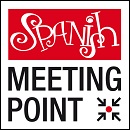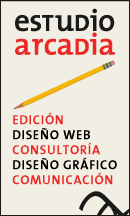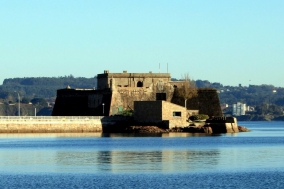Spanish schools and accommodation to study Spanish in Spain
Recent posts
Last schools
introduced
introduced
1 Accommodation

0 Spanish schools

Learning Spanish in Corunna. The tourist guide to study your Spanish course.
General Information. 246,000 inhabitants. 590 kilometres to the northwest of Madrid. La Coruña belongs to the Autonomous Community of Galicia. Although the city may have its origins in an ancient Celtic settlement, it only began to acquire importance during the Roman era, when its port became a key point on sailing routes; a witness to this period is the Tower of Hercules, a genuine symbol of La Coruña. It was the capital of Galicia between 1563 and 1982. The University of La Coruña has approximately 24,000 students. Two official languages are spoken in the city: Spanish and Galician. La Coruña is a very attractive place to study Spanish with many language schools offering a wide range of courses.
World Heritage Site. The Tower of Hercules (Torre de Hércules), declared a World Heritage Site in 2009, was built in the 2nd century and is the world's only working Roman lighthouse.
Surrounding Areas. Castro de Elvira (6 kilometres), a fortified town. Betanzos (23 kilometres), a town boasting many fine examples of medieval architecture. Camariñas (90 kilometres), a pretty seaside town where the rugged Atlantic coast contrasts with the tranquil beaches facing the estuary. Finisterre (107 kilometres), which the Romans believed was the end of the world where the sun vanished into the sea. Muros (105 kilometres), one of the most important ports in Galicia during the Middle Ages. Santiago de Compostela (75 kilometres), a World Heritage Site.
Main Sights. Two of La Coruña's churches, Iglesia de Santiago and Iglesia de Santa María del Campo, are fine examples of well-conserved Romanesque architecture. Another outstanding religious building is the Convento de Santa Bárbara, a 15th century convent, and the square of the same name, jointly considered an Ensemble of Historic-Artistic Merit. As an example of the Baroque style, it is worth highlighting the Monastery of St. Dominic (Convento de Santo Domingo). Other important buildings: the Town Hall (Ayuntamiento) in Plaza de María Pita, the heart of La Coruña, and, close by, the Casa-Museo Emilia Pardo Bazán, the ‘House-Museum' devoted to the locally-born 19th century novelist. Avenida de la Marina, a seafront boulevard lined with typical tall white houses whose glazed galleries are the reason why La Coruña has been dubbed the "City of Glass".
Culture. In June La Coruña hosts one of Spain's most important Festivals of Advanced Music and Multimedia Art: Sonar. Among the most interesting museums are the Archaeological Museum, located in the Castillo de San Antón, and the Aquarium Finisterrae, which is both an aquarium and an interactive marine science centre. La Coruña's main cultural venues include an opera house (Palacio de la Ópera), two theatres, the Teatro Rosalía de Castro and the refurbished Teatro Colón-Caixa Galicia, the PALEXCO exhibition and conference centre and the Coliseum, which is used mainly for concerts and sporting events. El Jardín de San Carlos, an attractive garden situated in the old quarter of La Coruña, is a national Site of Historic-Artistic Merit.
Beaches. La Coruña has eight magnificent urban beaches and no less than 18 in the entire province, not to mention one of the longest seafront promenades in Europe, an ideal spot to enjoy a beautiful sunset. The beaches are a major attraction for the many students who decide to study Spanish in La Coruña.
Shopping. There is no shortage of shopping areas in La Coruña, where department stores, famous brand names and charming small shops rub shoulders with one another. Two city centre streets, Calle Torreiro and Calle Real, make up the busiest shopping area. The Inditex retail empire, based in the small town of Arteixo (15 kilometres), has hundreds of branches in La Coruña, including several outlets of Zara, one of the most successful fashion brands in the world.
Gastronomy. La Coruña has a wide range of bars, taverns and restaurants. The most typical are located in La Zona de los Vinos, the ‘Wine Area' comprising Calle La Estrella, Calle Los Olmos, Calle Barrera and Calle Galera. Here you can sample the most popular tapas, such as empanada (a savoury pie filled with meat or fish, peppers and onion), cheese, fried fish, octopus, squid and other types of seafood, all of which go well with any of Galicia's excellent white wines (Albariño, Ribeiro, Amandi, Godello...) or beer. The entire coast of Galicia is rich in excellent fish and seafood: hake, octopus, shore crab, goose barnacle, spider crab, lobster, oyster, clam.... It is therefore hardly surprising that the sea provides the key ingredients of the majority of the region's typical dishes. In the inland area of the province there are also goods meats, cheeses and horticultural products with designation of origin.
Sports. La Coruña offers the opportunity to play or learn golf on any of its five courses, one of which is situated next to the Tower of Hercules. It also has a horse riding centre and several marinas. Water sports, such as boat racing and scuba diving, have become increasingly popular in recent years. The local first division football team, Real Club Deportivo de la Coruña, or "Depor" as they are more popularly known, play their home games at the Riazor stadium, which seats 35,000 spectators.
Fiestas. Bonfires of St. John (Hogueras de San Juan, 23rd and 24th June). Whenever St. James' Day (25th July) falls on a Sunday, Santiago de Compostela (72 kilometres) celebrates a "Xacobeo" Holy Year with an extensive programme of festivities and cultural activities.
Transport. With its striking traditional colours, the tram is the most original and eco-friendly mode of transport in La Coruña. A sightseeing bus operates during the summer months. It is easy to get from La Coruña to other Spanish cities by train or by using the various coach services.
Nightlife. Students who decide to study Spanish in La Coruña will discover a very active nightlife. The city is full of busy cafés, pubs and discotheques with DJs. Several neighbourhoods and nearby towns, such as Ares, Mugardos, Pontedeume, Miño, Xubia, Ferrol and Betanzos, also offer a range of interesting night-time entertainment alternatives. There is a weekend night bus service called NoiteBús, which offers unlimited use with a one-day return ticket.
World Heritage Site. The Tower of Hercules (Torre de Hércules), declared a World Heritage Site in 2009, was built in the 2nd century and is the world's only working Roman lighthouse.
Surrounding Areas. Castro de Elvira (6 kilometres), a fortified town. Betanzos (23 kilometres), a town boasting many fine examples of medieval architecture. Camariñas (90 kilometres), a pretty seaside town where the rugged Atlantic coast contrasts with the tranquil beaches facing the estuary. Finisterre (107 kilometres), which the Romans believed was the end of the world where the sun vanished into the sea. Muros (105 kilometres), one of the most important ports in Galicia during the Middle Ages. Santiago de Compostela (75 kilometres), a World Heritage Site.
Main Sights. Two of La Coruña's churches, Iglesia de Santiago and Iglesia de Santa María del Campo, are fine examples of well-conserved Romanesque architecture. Another outstanding religious building is the Convento de Santa Bárbara, a 15th century convent, and the square of the same name, jointly considered an Ensemble of Historic-Artistic Merit. As an example of the Baroque style, it is worth highlighting the Monastery of St. Dominic (Convento de Santo Domingo). Other important buildings: the Town Hall (Ayuntamiento) in Plaza de María Pita, the heart of La Coruña, and, close by, the Casa-Museo Emilia Pardo Bazán, the ‘House-Museum' devoted to the locally-born 19th century novelist. Avenida de la Marina, a seafront boulevard lined with typical tall white houses whose glazed galleries are the reason why La Coruña has been dubbed the "City of Glass".
Culture. In June La Coruña hosts one of Spain's most important Festivals of Advanced Music and Multimedia Art: Sonar. Among the most interesting museums are the Archaeological Museum, located in the Castillo de San Antón, and the Aquarium Finisterrae, which is both an aquarium and an interactive marine science centre. La Coruña's main cultural venues include an opera house (Palacio de la Ópera), two theatres, the Teatro Rosalía de Castro and the refurbished Teatro Colón-Caixa Galicia, the PALEXCO exhibition and conference centre and the Coliseum, which is used mainly for concerts and sporting events. El Jardín de San Carlos, an attractive garden situated in the old quarter of La Coruña, is a national Site of Historic-Artistic Merit.
Beaches. La Coruña has eight magnificent urban beaches and no less than 18 in the entire province, not to mention one of the longest seafront promenades in Europe, an ideal spot to enjoy a beautiful sunset. The beaches are a major attraction for the many students who decide to study Spanish in La Coruña.
Shopping. There is no shortage of shopping areas in La Coruña, where department stores, famous brand names and charming small shops rub shoulders with one another. Two city centre streets, Calle Torreiro and Calle Real, make up the busiest shopping area. The Inditex retail empire, based in the small town of Arteixo (15 kilometres), has hundreds of branches in La Coruña, including several outlets of Zara, one of the most successful fashion brands in the world.
Gastronomy. La Coruña has a wide range of bars, taverns and restaurants. The most typical are located in La Zona de los Vinos, the ‘Wine Area' comprising Calle La Estrella, Calle Los Olmos, Calle Barrera and Calle Galera. Here you can sample the most popular tapas, such as empanada (a savoury pie filled with meat or fish, peppers and onion), cheese, fried fish, octopus, squid and other types of seafood, all of which go well with any of Galicia's excellent white wines (Albariño, Ribeiro, Amandi, Godello...) or beer. The entire coast of Galicia is rich in excellent fish and seafood: hake, octopus, shore crab, goose barnacle, spider crab, lobster, oyster, clam.... It is therefore hardly surprising that the sea provides the key ingredients of the majority of the region's typical dishes. In the inland area of the province there are also goods meats, cheeses and horticultural products with designation of origin.
Sports. La Coruña offers the opportunity to play or learn golf on any of its five courses, one of which is situated next to the Tower of Hercules. It also has a horse riding centre and several marinas. Water sports, such as boat racing and scuba diving, have become increasingly popular in recent years. The local first division football team, Real Club Deportivo de la Coruña, or "Depor" as they are more popularly known, play their home games at the Riazor stadium, which seats 35,000 spectators.
Fiestas. Bonfires of St. John (Hogueras de San Juan, 23rd and 24th June). Whenever St. James' Day (25th July) falls on a Sunday, Santiago de Compostela (72 kilometres) celebrates a "Xacobeo" Holy Year with an extensive programme of festivities and cultural activities.
Transport. With its striking traditional colours, the tram is the most original and eco-friendly mode of transport in La Coruña. A sightseeing bus operates during the summer months. It is easy to get from La Coruña to other Spanish cities by train or by using the various coach services.
Nightlife. Students who decide to study Spanish in La Coruña will discover a very active nightlife. The city is full of busy cafés, pubs and discotheques with DJs. Several neighbourhoods and nearby towns, such as Ares, Mugardos, Pontedeume, Miño, Xubia, Ferrol and Betanzos, also offer a range of interesting night-time entertainment alternatives. There is a weekend night bus service called NoiteBús, which offers unlimited use with a one-day return ticket.
© TEXT: SPANISH IN TOUR.
VIDEO: Turismo de A Coruña
VIDEO: Turismo de A Coruña























